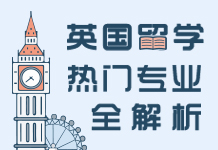SAT阅读必知的文学术语
来源:未知
浏览:
发布日期:2014-07-19 23:05
摘要:朗阁SAT,专业 SAT培训 ,一对一辅导,个性化课程设置,圆你出国梦想! 1.Literature of the absurd: (荒诞派文学) The term is applied to a number of works in drama and prose fiction which have in common the sense that the human condition is esse
1.Literature of the absurd: (荒诞派文学) The term is applied to a number of works in drama and prose fiction which have in common the sense that the human condition is essentially absurd, and that this condition can be adequately represented only in works of literature that are themselves absurd. The current movement emerged in France after the Second World War, as a rebellion against essential beliefs and values of traditional culture and traditional literature. They hold the belief that a human being is an isolated existent who is cast into an alien universe and the human life in its fruitless search for purpose and meaning is both anguish and absurd.
2.Theater of the absurd: (荒诞派戏剧) belongs to literature of the absurd. Two representatives of this school are Eugene Ionesco, French author of The Bald Soprano (1949) (此作品中文译名<秃头歌女>), and Samuel Beckett, Irish author of Waiting for Godot (1954) (此作品是荒诞派戏剧代表作<等待戈多>). They project the irrationalism, helplessness and absurdity of life in dramatic forms that reject realistic settings, logical reasoning, or a coherently evolving plot.
3.Black comedy or black humor: (黑色幽默) it mostly employed to describe baleful, na?ve, or inept characters in a fantastic or nightmarish modern world playing out their roles in what Ionesco called a “tragic farce”, in which the events are often simultaneously comic, horrifying, and absurd. Joseph Heller’s Catch-22 (美国著名作家约瑟夫海勒<二十二条军规>) can be taken as an example of the employment of this technique.
4. Aestheticism or the Aesthetic Movement(唯美主义): it began to prevail in Europe at the middle of the 19th century. The theory of “art for art’s sake” was first put forward by some French artists. They declared that art should serve no religious, moral or social purpose. The two most important representatives of aestheticists in English literature are Walt Pater and Oscar Wilde.
5. Allegory(寓言): a tale in verse or prose in which characters, actions, or settings represent abstract ideas or moral qualities, such as John Bunyan’s The Pilgrim’s Progress. An allegory is a story with two meanings, a literal meaning and a symbolic meaning.
6. Fable(寓言): is a short narrative, in prose or verse, that exemplifies an abstract moral thesis or principle of human behavior. Most common is the beast fable, in which animals talk and act like the human types they represent. The fables in Western cultures derive mainly from the stories attributed to Aesop, a Greek slave of the sixth century B. C.
7. Parable(寓言): is a very short narrative about human beings presented so as to stress analogy with a general lesson that the narrator is trying to bring home to his audience. For example, the Bible contains lots of parables employed by Jesus Christ to make his flock understand his preach.
(注意以上三个词在汉语中都翻译成语言,但是内涵并不相同,不要搞混)
8. Alliteration(头韵): the repetition of the initial consonant sounds. In Old English alliterative meter, alliteration is the principal organizing device of the verse line, such as in Beowulf.
9. Consonance is the repetition of a sequence of two or more consonants but with a change in the intervening vowel, such as “live and love”.
10. Assonance is the repetition of identical or similar vowel, especially in stressed syllables, in a sequence of nearby words, such as “child of silence”.
11. Allusion (典故)is a reference without explicit identification, to a literary or historical person, place, or event, or to another literary work or passage. Most literary allusions are intended to be recognized by the generally educated readers of the author’s time, but some are aimed at a special group.
12. Ambiguity(复义性): Since William Empson(燕卜荪) published Seven Types of Ambiguity(《复义七型》), the term has been widely used in criticism to identify a deliberate poetic device: the use of a single word or expression to signify two or more distinct references, or to express two or more diverse attitudes or feeling.
13. Antihero(反英雄):the chief character in a modern novel or play whose character is totally different from the traditional heroes. Instead of manifesting largeness, dignity, power, or heroism, the antihero is petty, passive, ineffectual or dishonest. For example, the heroine of Defoe’s Moll Flanders is a thief and a prostitute.
14. Antithesis(对照):(a figure of speech)An antithesis is often expressed in a balanced sentence, that is, a sentence in which identical or similar syntactic structure is used to express contrasting ideas. For example, “Marriage has many pains, but celibacy(独身生活)has no pleasures.” by Samuel Johnson obviously employs antithesis.
15. Archaism(拟古):the literary use of words and expressions that have become obsolete in the common speech of an era. For example, the translators of the King James Version of Bible gave weight and dignity to their prose by employing archaism.
16. Atmosphere(氛围): the prevailing mood or feeling of a literary work. Atmosphere is often developed, at least in part, through descriptions of setting. Such descriptions help to create an emotional climate to establish the reader’s expectations and attitudes.
17. Ballad(民谣):it is a song, transmitted orally, which tells a story. It originated and was communicated orally among illiterate or only partly literate people. It exists in many variant forms. The most common stanza form, called ballad stanza is a quatrain in alternate four- and three-stress lines; usually only the second and fourth lines rhyme. Although many traditional ballads probably originated in the late Middle Age, they were not collected and printed until the eighteenth century.
18. Climax:as a rhetorical device it means an ascending sequence of importance. As a literary term, it can also refer to the point of greatest intensity, interest, or suspense in a story’s turning point. The action leading to the climax and the simultaneous increase of tension in the plot are known as the rising action. All action after the climax is referred to as the falling action, or resolution. The term crisis is sometimes used interchangeably with climax.
19. Anticlimax(突降):it denotes a writer’s deliberate drop from the serious and elevated to the trivial and lowly, in order to achieve a comic or satiric effect. It is a rhetorical device in English.
20. Beat Generation(垮掉一代):it refers to a loose-knit group of poets and novelists, writing in the second half of the 1950s and early 1960s, who shared a set of social attitudes – antiestablishment, antipolitical, anti-intellectual, opposed to the prevailing cultural, literary, and moral values, and in favor of unfettered self-realization and self-expression. Representatives of the group include Allen Ginsberg, Jack Kerouac and William Burroughs. And most famous literary creations produced by this group should be Allen Ginsberg’s long poem Howl and Jack Kerouac’s On the Road.

扫二维码,添加朗阁咨询老师,备注“官网”
免费领取雅思、托福备考计划、精选资料,最新口语新题考点资料
- 上一篇:SAT阅读文章长难句有哪些特点?
- 下一篇:SAT写作提纲如何快速写出?
26
2021-01
-
SAT阅读必须掌握的方法
SAT阅读要么不做训练,要么就集中训练。从主动思考到自动反应,熟练的掌握阅读方法。并且...
03
2020-12
-
SAT阅读都有哪些套路,一起来看看怎么避坑
我们都知道在SAT阅读中分为科学、历史、小说三个类型,这三种类型在做题时有三个不同的套...
26
2020-11
-
青岛SAT培训:SAT语法题考点有哪些?
很多小伙伴在备考SAT语法题时,被它涉及的知识点数量吓到了。很多同学就来问智美老师,S...
16
2020-10
-
sat词汇巧记必须知道的方法
SAT考试一般会要求考生的英语词汇量在12000-15000左右,那么对于那么多英文单词,如何有效地且...
16
2020-10
-
sat阅读中有哪些难点,看完这篇就够了
不少同学们面对SAT阅读中的难点都会非常头疼,那么SAT阅读中的难点在哪?今天青岛朗阁小编就...
19
2019-12
-
2020年SAT考试费用(附2020年SAT考试时间)
2020年SAT考试费用,很多小伙伴想要报名2020年SAT考试,但是对2020年SAT考试费用不是很了解。为...
热门课程
大家都在看
阅读(845)
阅读(599)
阅读(254)
阅读(224)
阅读(222)










